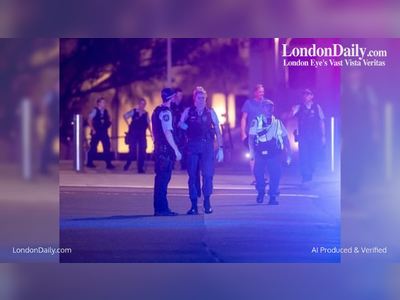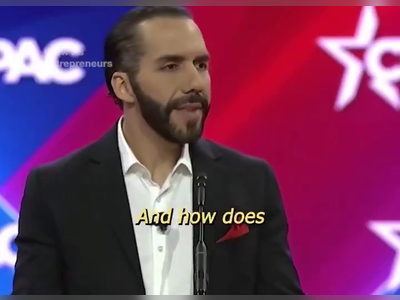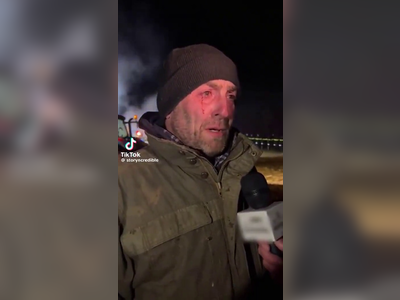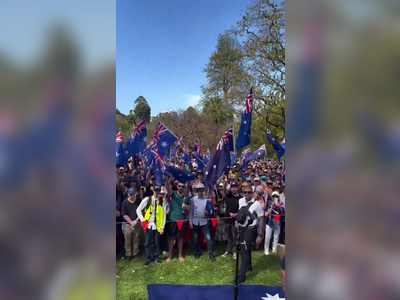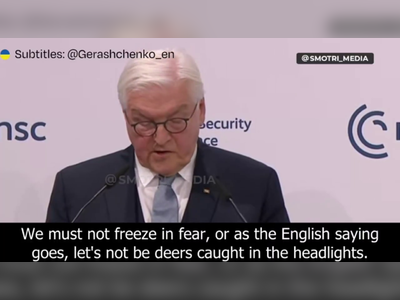
U.K. Doubles Down on a Tactic Disproportionately Targeting Black People
Giovanni Lawrence was not at the scene of the stabbing. He never touched the knife. The prosecution could find no motive, no history of violence, no surveillance footage and no witnesses.
He was sentenced to 21 years for murder.
The United States helped inspire Britain’s tough-on-crime politics. Even as crime fell and warnings mounted, politicians never looked back.
Jane Bradley, a U.K. investigative correspondent, obtained exclusive data and conducted dozens of interviews for a yearlong investigation on Britain’s use of tough-on-crime tactics and their racial implications.
The United Kingdom’s highest court delivered what seemed like a major victory for civil liberties in 2016, ruling that prosecutors had overreached for decades in using a tactic that sent hundreds of people to prison for life — for murders committed by others.
Defense lawyers, academics and activists had waged a decade-long legal battle, arguing that these so-called joint enterprise cases were unfair and racially biased. They rejoiced at the Supreme Court decision — heralded as historic in headlines around the country — and expected a sharp drop in prosecutions, as well as scores of overturned convictions.
Six years later, none of that has happened.
Rather than be constrained by the ruling, senior prosecutors have quietly devised strategies to keep bringing joint enterprise cases and winning convictions. New data, obtained by The New York Times through public records requests, reveals that the Crown Prosecution Service, the national prosecutor, has actually stepped up the pace of such prosecutions since the ruling — even as the homicide rate remained largely stable.
“The C.P.S. said: ‘Don’t worry. It’s not going to be this radical change,’” said Simon Harding, a senior detective who ran a homicide unit at London’s Metropolitan Police until 2021. “By the time all the questions had been asked, it was business as usual.”
The zealous use of these prosecutions is one example of how British leaders from both parties have pursued criminal justice policies that have disproportionately punished Black people. Black defendants are three times as likely as white defendants to be prosecuted for homicide as a group of four or more — a widely accepted measure of joint enterprise cases — according to the new data.
Joint enterprise itself is not a charge. Rather, it is a legal principle that gives prosecutors the power to charge multiple people with a single crime. It became notorious more than a decade ago in a string of highly publicized cases. In one, a teenager was imprisoned and then deported for a murder he did not even witness, much less carry out. In another, a partly blind 16-year-old, who said he could not even see his friends attacking someone, received a life sentence for murder.
Since the court ruling, the Crown Prosecution Service has tried to avoid such controversy. It has stopped using the term joint enterprise, but the cases continue. A year after the Supreme Court ruling, 11 teenagers from Manchester, England, were sent to prison for a stabbing — even though the judge acknowledged that he did not know if they had all participated in the attack. A young man with autism received a life sentence for a stabbing carried out by someone else while, he said, he sat in a car watching a music video.
While the stream of cases continued, the flood of successful appeals never materialized. Prosecutors opposed them and judges, having set an extremely high standard for appeals, rejected nearly all of them. Only a single person has been freed since the Supreme Court ruling.
The continued use of joint enterprise is one example of a British tough-on-crime policy that has grown increasingly strident. The new data — along with more than 100 interviews with current and former law enforcement officials, government insiders, lawyers, judges, academics, families and activists — shows that even as crime rates fell, as lawyers and judges protested, as parliamentary inquiries pointed to miscarriages of justice, the government’s messaging got tougher and its tactics got stricter.
Many of those tactics were imported from the 1990s war on drugs in the United States. But while American officials have reconsidered many criminal justice policies over the past decade, they have become an entrenched part of British politics.
Today, British politicians fuel perceptions that crime is skyrocketing. Crime rates often vary regionally, and some crime may be up compared with the period of pandemic lockdowns. But the latest official statistics show that national crime levels, including homicide, are actually lower than before the pandemic began in 2020. And overall, crime has been falling for decades.
Yet Britain is in the middle of its biggest prison expansion in more than a century as the Conservative government overhauls laws to seek tougher jail terms. The new prime minister, Rishi Sunak, has pledged to make crime a top priority and called for new powers to veto parole board decisions.
With new powers, police officers are ramping up the kind of stop-and-frisk tactics made notorious, and ultimately abandoned, in New York.
As with joint enterprise, these policies disproportionately affect minorities. The police in Britain are six times more likely to stop Black people than white people. Black people are also three times more likely to be arrested and more likely to be given longer prison sentences.
Periodically, and as recently as last month, official reports have highlighted systemic racism in the criminal justice system, yet they have been largely ignored. Last year, a government-backed committee said it found no evidence of institutional racism in Britain, eliciting an outcry.
Joint enterprise cases can give prosecutors an advantage by allowing them to lump defendants together and, in many instances, label them gang members. And Black people, research shows, are far more likely to be tagged with that designation.
After being presented with The Times’s findings, a prosecution service spokesman said that the authorities do not apply the term “gang” lightly.
“If a person helps or encourages another to commit a murder, it is right they can face prosecution for their involvement in the crime,” the Crown Prosecution Service statement said.
The agency denied responsibility for any racial disparities and noted that “racial disproportionality is an issue in almost all stages of the criminal justice system.” But the agency said it would begin tracking joint enterprise cases as it develops a new case-management system.
Lives Changed by Joint Enterprise
Durrell Goodall was one of 11 teenagers from Manchester jailed for a stabbing that only one person carried out.
The judge admitted he did not know whether Mr. Durrell took part in the attack. He did not carry a weapon and had no relevant prior convictions.
Wayne Collins was accused of being part of a gang which shot at police and set fire to a Birmingham pub during the 2011 riots.
He was sentenced to 18 years, even though the court accepted that he never held the gun and security footage proves he took no active part in the rioting of the pub. He was simply present.
Calum Farquhar was one of four young black and mixed race men convicted of killing a white man during a marijuana burglary in Northampton.
Mr. Farquhar admitted driving the group to steal marijuana from what they believed was an empty house. He told Liberty Investigates, a human rights journalism unit, that he waited in his car and watched a music video as the crime took place.
Under the joint enterprise doctrine, which has existed since the 19th century, one person may have physically committed the crime, but associates can also be found guilty.
A classic scenario, and one often cited by prosecutors, is a robbery in which one culprit steals the cash and another drives the getaway car. Another would be a rape committed by one person, while another restrains the victim.
In many crimes, though, the roles are less clear. For decades, prosecutors won convictions simply by proving that accomplices should have anticipated the crime, even if they never intended it to happen.
In 2016, the United Kingdom’s Supreme Court threw out that standard. Going forward, to win a murder conviction under the joint enterprise doctrine, prosecutors would need to prove that an accomplice actually intended for the murder to happen. That was a huge change, one that seemed likely to curtail such prosecutions.
Prosecutors have long refused to publish data on how often they bring cases, or on the ethnicity of defendants, despite a reprimand and formal recommendations to do so from a powerful parliamentary inquiry as far back as 2014. After The Times filed two formal complaints with the government and the public prosecutor’s office, they relented and provided data on multi-defendant homicide cases.
Just one example of the continued use of these prosecutions could be found this year inside Manchester Crown Court, where a 20-year-old Black man named Giovanni Lawrence was convicted of murder for a stabbing carried out by his white friend.
Mr. Lawrence was not at the murder scene and never touched the weapon. He was accused of driving a car in a chase leading up to the killing. But prosecutors could find no motive, no history of violence, no security camera footage and no witnesses in the run-up to the attack.
“This was a joint enterprise from beginning to end,” Guy Gozem, a soft-spoken, silver-haired prosecutor, said as the trial opened.
‘How Do We Win This Election?’
In late 2011, England was engulfed by the largest civil unrest in a generation after the fatal police shooting of a Black man, Mark Duggan. Peaceful protests turned violent. Young men with their faces hidden behind scarves and ski masks looted, set fires, hurled bottles and attacked police officers.
The riots quickly came to symbolize simmering racial tensions and the pent-up anger among the young and the poor over government cuts to social programs. But David Cameron, then the Conservative prime minister, blamed gangs, even though official statistics quickly showed that gangs did not play a key role. The government announced millions in new money to target gang crime.
“The police saw this as an opportunity to get resources,” said Peter Herbert, who until his retirement last year was one of Britain’s few Black judges.
The tough-on-crime response came straight out of an American playbook. As far back as 1992, when Bill Clinton campaigned on the Democratic message that Republicans were too soft on crime, British politicians were taking notes. Philip Gould, the opposition Labour Party’s strategy adviser, traveled to Little Rock, Ark., during that campaign and saw what he called a “road map.”
Mr. Clinton’s law-and-order message, in particular, resonated with Labour leaders, the party’s communications strategist Peter Mandelson wrote in his autobiography. It helped inspire a famous refrain of a future prime minister, Tony Blair: “Tough on crime, tough on the causes of crime.” And it ignited an arms race between Labour and the Conservatives over who could be seen as the party of law and order.
Lost in the political fight, however, was the fact that violent crime was already declining. And despite a flurry of news reports warning of a drug-fueled crime wave, the crack epidemic never came to Britain.
“What we imported was the rhetoric,” said Prof. Tim Newburn, a criminologist at the London School of Economics who studies crime in Britain and the United States. “We borrowed the clothes of tough-on-crime from those fighting the war on drugs in the U.S. But in reality, we never had the same drug problem that the U.S. had.”
Since the mid 1990s, overall crime — including violent offenses — has fallen in England and Wales. It still has far lower levels of serious violent crime than the United States, where the murder rate — and the imprisonment rate — is around five times as high.
“There’s always been a tendency for the U.K. Labour Party to go to the Democratic Party to say, ‘How do we win this election?’” said Mr. Herbert, who served as an adviser to Mr. Blair’s attorney general.
“As part of that, they found that ‘criminal justice is your weakness, you can turn it into a strength, just talk about longer sentences, safer streets,’ all these clichés which have an impact on poor people and minorities,” he said.
The Home Office and the Ministry of Justice declined to comment. The National Police Chiefs’ Council, the United Kingdom’s national body for law enforcement, said it was committed to improving policing for Black people, including through new training and increased use of data and body cameras.
As politicians, police officers and prosecutors intensified their focus on gangs, joint enterprise became an important tool. The Metropolitan Police, the nation’s biggest force, once dropped leaflets through the doors of young people they suspected of being associated with gangs, warning that they could be sent to prison “for just being present” or failing to stop crimes being committed.
The raw numbers were small — an estimated 100 to 200 people were prosecuted in joint enterprise homicide cases each year, according to an analysis eight years ago by the Bureau of Investigative Journalism. But in a country with only about 700 homicides a year, joint enterprise cases were a significant share of prosecutions.
And that share is growing. Since the landmark Supreme Court ruling, nearly 15 percent of homicide defendants have been prosecuted for murder as a group of four or more, compared with nearly 10 percent before, according to a Times analysis of data obtained separately by the human rights journalism unit Liberty Investigates.
As these cases drew criticism, the Supreme Court handed down its landmark 2016 ruling in the case of Ameen Jogee.
Rebranding
As activists celebrated the ruling, many police officers were alarmed.
“In prison, you could hear all these people saying, ‘Yes!’” recalled Mr. Harding, the former murder detective at the Metropolitan Police. “We went to the C.P.S. and said: ‘What is this? What is this going to mean?’”
But a dozen current and former prosecutors and law enforcement officials told The Times that there was never any question of stopping, or even curbing, the use of joint enterprise. The question was: how to continue using it?
They needed a strategy for convincing jurors that people intended to commit the crimes, even when they did not carry them out themselves. An elite group of lawyers with the office of the attorney general, the government’s chief legal adviser, trained officers and prosecutors nationwide on how to do just that.
“They realized that there was a new test to apply to it, but that wasn’t going to prevent people being prosecuted,” said one of those lawyers, Duncan Atkinson.
Now, prosecutors increasingly focus on a defendant’s frame of mind. Evidence like “association” — the relationship between defendants — takes on a key role in helping prove intent. Social media posts and even the music people listen to can be used to help sway a jury that defendants have a bad character or are part of a “gang.”
Several prosecutors said that, in some ways, the ruling actually made joint enterprise cases easier to win.
As the prosecutors saw it, joint enterprise also needed rebranding. According to a Crown Prosecution Service report, the prosecutors scrapped the label “joint enterprise” because “the term itself has become controversial.” Individual prosecutors might use the term joint enterprise in court, but in public documents and official guidance to investigators, the new term became “secondary liability.”
And it worked.
Data from the Ministry of Justice shows that in the five years after the Supreme Court decision, the number of homicide cases involving four or more defendants increased by 42 percent.
And prosecutors are winning. The number of convictions rose by nearly 50 percent. Figures from the Crown Prosecution Service show that Black defendants were three times as likely as white defendants to be prosecuted under joint enterprise.
In a Manchester courtroom this spring, the murder trial against Giovanni Lawrence showcased the many ways in which prosecutors weave together circumstantial evidence and friendships to suggest gang membership. That gang label can help persuade jurors that defendants had criminal intent.
Mr. Lawrence was charged in the killing of Rhamero West, 16, who was stabbed in September 2021 after a brief car chase. Mr. Lawrence and his friends pursued Mr. West and his friends for reasons that prosecutors could never determine. After a crash, Mr. West ran away, but Ryan Cashin, 19, caught up with him and fatally stabbed him in the leg.
Mr. Cashin, Mr. Lawrence and two other teenagers were charged with murder, though a judge accepted that even Mr. Cashin did not set out to kill the boy. Mr. Lawrence was not at the scene of the stabbing. Prosecutors said he had driven one of the cars in the chase — evidence that they argued showed his intent to help the killer.
Mr. Lawrence could have been charged with manslaughter, which carries no minimum prison term; sentences average about 10 years. Instead, prosecutors opted for the murder charge, which carries a mandatory life sentence.
“While the fatal blows were inflicted by Cashin, the other three were clearly part of the continuing attack,” the prosecutor, Mr. Gozem, told jurors in March.
Experts had expected that, after the Supreme Court ruling, fewer defendants like Mr. Lawrence would be prosecuted, and fewer still would face the maximum-possible charge.
Whether Mr. Lawrence was actually behind the wheel is debatable. Cellphone location data left little doubt that he was in the car, but that did not resolve the critical question of who was driving. Detectives discovered Mr. Lawrence’s DNA on the turn signal of one of the cars, but it was mixed with other DNA profiles. No traces were found on the steering wheel, the rearview mirror or the gear stick.
Mr. Gozem, the prosecutor, did not present the case as a gang killing. He was careful in his language and civil in cross-examination. But he hinted at gang involvement and occasionally used the word “gang” to describe Mr. Lawrence and his friends.
They alluded to Mr. Lawrence’s “bad character,” and used his association with the other three defendants to help the almost entirely white jury see them as a gang who were “were all acting together” and should be punished equally.
They used social media and cellphone photographs and messages to show that the defendants had been in touch. None ever denied being friends. They lived in the same working-class Manchester neighborhood and had known each other for years. But in court, they became “associates.” Prosecutors even tried to present violent rap lyrics as evidence of criminality, though the judge refused to let jurors hear them.
Research consistently shows that the police are far more likely to apply the gang label to Black people. Young Black people made up 89 percent of names on Manchester gangs database, according to researchers at Manchester Metropolitan University. In London, the picture is similarly stark.
“It is driven by a racialized gang narrative, which, increasingly, is only used in instances where nonwhite people are being prosecuted,” said Patrick Williams, a Manchester Metropolitan University sociologist who has studied joint enterprise for more than a decade.
Mr. Lawrence tried to have the case thrown out. But while a judge acknowledged that the evidence of Mr. Lawrence’s involvement was “less direct and less strong,” he allowed the case against him to continue.
On April 11, around an hour after saying they were approaching deadlock, the jury convicted Mr. Lawrence of murder.
He was sentenced to life in prison, the same sentence as Mr. Cashin, who actually killed someone. The only difference is that Mr. Lawrence will be eligible for parole in 21 years, but Mr. Cashin will have to wait 24 years.
Mr. Lawrence is appealing. His lawyers say this was the kind of joint enterprise case that the Supreme Court placed off limits.
He faces long odds. To overturn a conviction under joint enterprise, judges held, defendants had to prove that they suffered a “substantial injustice,” an extremely high bar to cross.
Since the ruling, only one direct court appeal has succeeded. It is not known how many have been submitted. Of 156 joint enterprise-related cases submitted to the Criminal Cases Review Commission, the official body that reviews possible miscarriages of justice, four were sent to the appeals court. Judges rejected all of them.
Even some prosecutors said they were surprised at how forcefully courts shut the door on appeals.
On the day of Mr. Lawrence’s conviction, Rhamero West’s mother, Kelly Brown, lit fireworks and released purple balloons — her son’s favorite color. It would not bring him back, but she said it was closure. She welcomed the verdict, but felt for the families of the defendants.
That same day, Mr. Lawrence’s mother, Ann-Marie Lawrence, felt so sick that her older son had to drive her home. Once alone, she poured herself a rum and lit a cigarette.
“It’s us mums who are feeling the pain at the end of the day, on both sides,” she said. “But this law, it’s not fair.”

